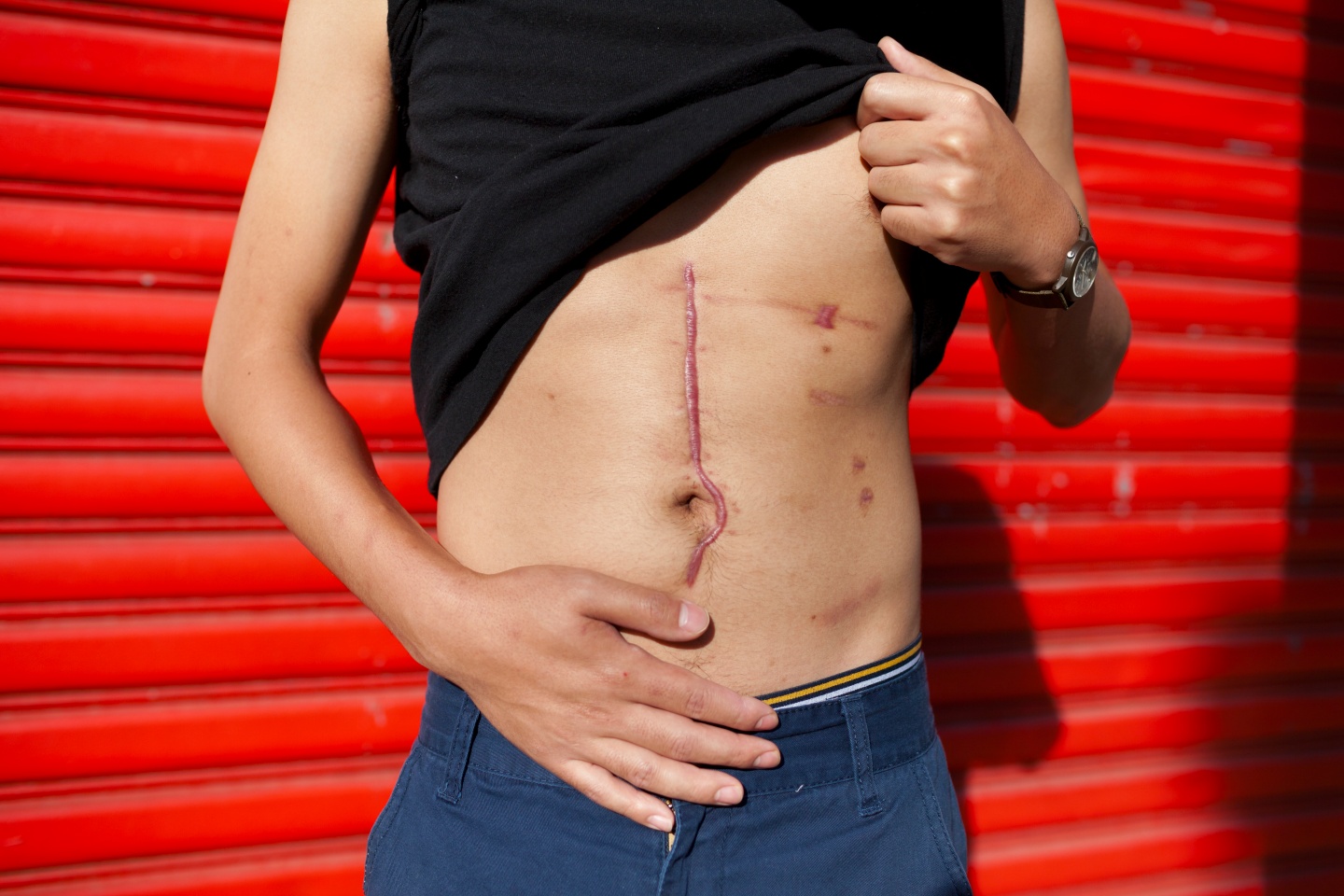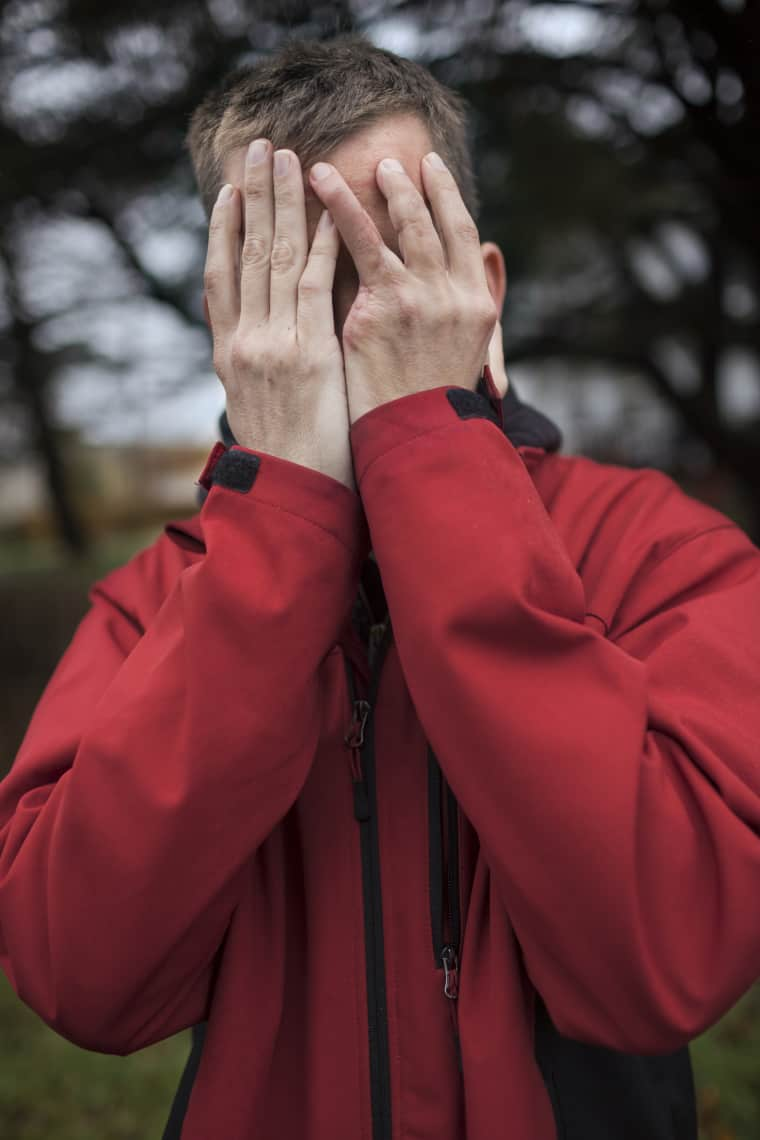This Photographer Is Documenting Survivors Of Gun Violence In The U.S.
In her bold new book, SHOT, Kathy Shorr puts human faces at the center of a contentious issue.
 From SHOT: 101 Survivors of Gun Violence in America.
Image by Kathy Shorr
From SHOT: 101 Survivors of Gun Violence in America.
Image by Kathy Shorr
In 2015 alone, the national homicide rate in the United States increased by 11 percent, with gun use contributing to 80 percent of deaths. At a moment when the country is becoming more murderous than any time since the early ‘70s, people like photographer Kathy Shorr are voicing an urgent need for gun law reform, using the power of photojournalism to chronicle survivors of gun violence.
Shorr, who is based in New York City, embarked on a two-year, self-funded mission to photograph 100 of these people and compile the images in book form. With a determined focus, she documented a diverse range of subjects across the U.S. — aged 8 to 80 years old, all with various occupations and positions on gun rights (a third grader, a community activist, a small business owner, and a police officer, are among them). Candid statements from survivors lend context and depth to each image, most of which were taken where the shooting occurred.
Here, in her own words, Shorr details the terror and triumph behind her true-to-life photo series, SHOT: 101 Survivors of Gun Violence in America, out now via Powerhouse Books.
What drew you to photography?
I went to the School of Visual Arts in New York City. I always liked street photography and taking portraits. One time I drove a limousine and photographed the people in the car over a period of nine months. About 10 years ago, I did a project where I went to a homeless shelter in Brooklyn every Saturday and photographed the families there, with their permission of course. The next week, I would come back and give everyone an 8x10 picture of their family. Later we invited the greater community to a big exhibition in the shelter’s recreation room with donated frames. Doing that project made me start thinking about photography as something that could change lives.
You’ve said that the impetus for this project was a violent situation at your house, involving a gun. What happened?
A number of years ago I was robbed; today they call it a home invasion. Armed intruders came into my house and pointed a gun at me and my daughter, who had just started to walk. That feeling of helplessness — someone else controlling your destiny — is something you never want to experience again. You feel very lucky if you can walk away from it physically unharmed. It's probably the most awful feeling a human being can have, when someone else is in charge of your fate. It's become part of my psyche now.
At the time, I was also teaching photography and art classes at an inner city school in New York. There were kids who would come in with memorial cards around their necks, almost making folk heroes of people who had been killed in their neighborhoods, or their family, or friends. I would see this and think about the people who get shot and survive. Does anybody ever think about them?
 Image by Kathy Shorr
Image by Kathy Shorr
 Image by Kathy Shorr
Image by Kathy Shorr
Were there any specific events or things that happened nationally or globally that inspired the timing of this project?
I felt that the country had become very polarized. Gun issues are clearly not black-and-white; there are many shades of grey. I thought that if I could do a project where the abstraction of gun violence was taken away — so it could become something human with faces — that people would be able to confront this issue more easily.
I wanted it to be extremely geographically and ethnically diverse, because gun violence affects everyone of all ages. Getting a Native American involved was one of the hardest parts of the project. It took me two years, but I was persistent. I made sure to include gun owners, as well.
How were you able to find gun victims across the U.S. ages 8 to 80?
There were many different ways of getting in touch with people. I spent many days on the computer doing research. There was a lot of old-fashioned letter-writing — seeing a story about an incident that happened in a certain area, calling a reporter, looking in the white pages for someone's name, and getting help from lawyers, doctors, and non-profits who work with domestic violence survivors. Since I funded this project with my own money, I had to be conscious of being efficient with my travel. If I was going to L.A., I would try to focus on that area and find at least two other people.
The first person I photographed was a man in Brooklyn. I was watching a local TV show, and it showed someone who had been shot six weeks prior. He had a memorable Indonesian last name, so I Googled him and sent an email. He said he would be part of the project.
I told him I was also interested in photographing him in the location, which he agreed to. When I met him, he told me he had taken a Xanax to be calm, because it had been less than two months since it happened. I also asked to photograph his scar, to show the real damage from those who want to share it. A few people later on did not want to, but most people did want to, actually. He felt that it was very cathartic, that he had taken back the space. He felt very empowered by it. After that, I felt like I could continue the project.
Were any of these survivors hesitant to be photographed where they were originally shot?
There are 101 different people total, so there were a range of circumstances. If someone was shot in their home, a lot of times they still live in their home. Or they were shot in their car, which they still drive. Though their lives were interrupted, they go back to them, often because they have to. For the most part, people who went back to a place they had avoided felt really good about going back, because it was theirs now, and they moved past it. It's the idea of confronting the beast, and saying, “No, I need to do this for me."
In one case, I was going to Miami to photograph a few people there. One woman emailed me the night before and said, "I can't do it. I went back today, and I freaked out." Her boyfriend shot her in the parking lot of their apartment house, and she hadn't gone back yet. Going back triggered a response. I told her I didn't want to encourage her to do something she wasn't comfortable with, so the next year I went back to Miami again, so I sent her an email and said, "Do you think you might want to try to go there this time?" She said that she wanted to, and she did. She was fine, and she felt really good about doing it. She just needed that first time to make peace with it.
The idea is that if someone looks at the project and can’t identify with one of the people, they would definitely be able to identify with the locations where they were shot. The locations were never scary or like a haunted house situation. Most of the places are very normal locations that people go to everyday. There's a policewoman in the book who was shot by her husband. You might be able to identify with the fact that she was shot in a Wal-Mart parking lot. I didn’t do this as a project to put people on different sides. I did it to get people to identify that this could happen to them or someone they know.
 Image by Kathy Shorr
Image by Kathy Shorr
“It’s probably the most awful feeling a human being can have, when someone else is in charge of your fate.” —Kathy Shorr
What were some of the other decisions you made visually and compositionally as you were doing the series?
I met and talked with everyone first, anywhere from half an hour to three hours. We would meet to have coffee, sit down, and talk. I wanted to get to know them and make sure they were comfortable. It was very intense. I had to keep calm and cool. Everything can't be controlled like in studio photography. I wanted to show these people looking real. That's the important thing.
How did the number become 101 people?
I knew that I wanted to finish in December 2015. The middle of the country is the last place I went. I had 97 people at that point. I found a story in the newspaper about a young Native American woman in South Dakota who was in a domestic violence situation. Her boyfriend killed her three friends, shot her in the back, and killed himself. She was the only survivor. Her grandmother and I had phone conversations for a few months. Nothing ever happened. Right around Thanksgiving, a year after her incident, I said to her grandmother, "I would love to have her in the project, but I'm finishing next month, and I have to book flights.” I had two people to photograph in Milwaukee, but I couldn't wait any longer because I had to end the project in December.
I thought it wouldn't work out. The day after Thanksgiving, I got a call; her grandmother said that her granddaughter, Karissa, had a very bad weekend. Both her therapist and grandmother said she should be in the project, so she agreed to do it. That made it 101, which I actually like better than 100. 101 sounds good.
It was so powerful and moving that she could do this. It really showed the courage and determination of all the survivors in this project. Many people said, “If my story can help one person avoid this from happening to them, then it's worth my time and energy.” They have a complete selflessness about wanting to help other people.
 Image by Kathy Shorr
Image by Kathy Shorr
 Image by Kathy Shorr
Image by Kathy Shorr
There are people in the book who carry guns or are pro-gun rights. Did you find that the subjects always vocalized support for more restrictive gun rights?
I never asked anybody if they had a gun, because I felt like it wasn’t really my business. Some people would say to me, "I have guns, of course I have guns," sometimes from a culture of hunting or for defending themselves if they live in the middle of nowhere. Then there are people who would never go near a gun after what happened to them. There are people I photographed who didn't connect what happened to them with their hunting, and didn't get rid of their guns. The NRA member I photographed would be dead if he didn't have a gun on him. There are all different kinds of stories.
People who own guns and want responsible gun laws (which I think is most people who own guns), those are the people who hold the key to this question about responsibility and guns. We all have to start talking. 70 percent of NRA members are not allowed to vote or make political decisions about how that organization behaves. I don't think that the people who are OK with mentally ill people having guns represent the majority of people in this country, but for some reason, it's a political group that has a lot of money and power. We need to hear more from gun owners who want gun safety.